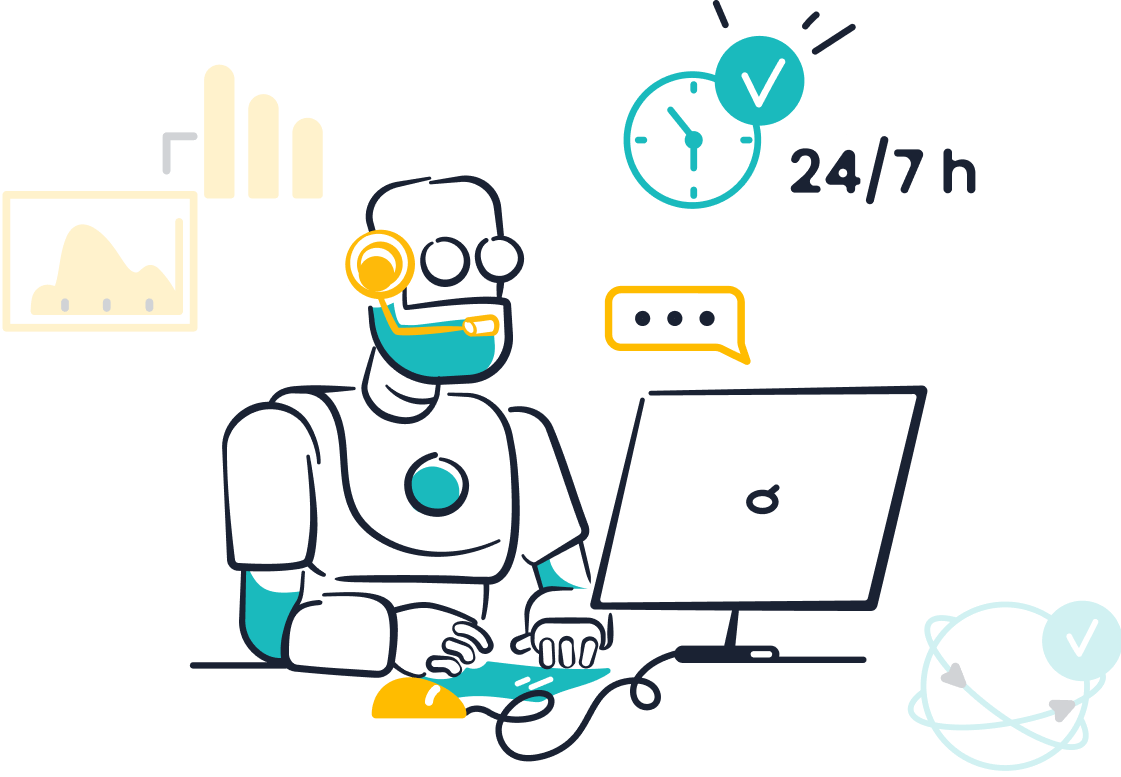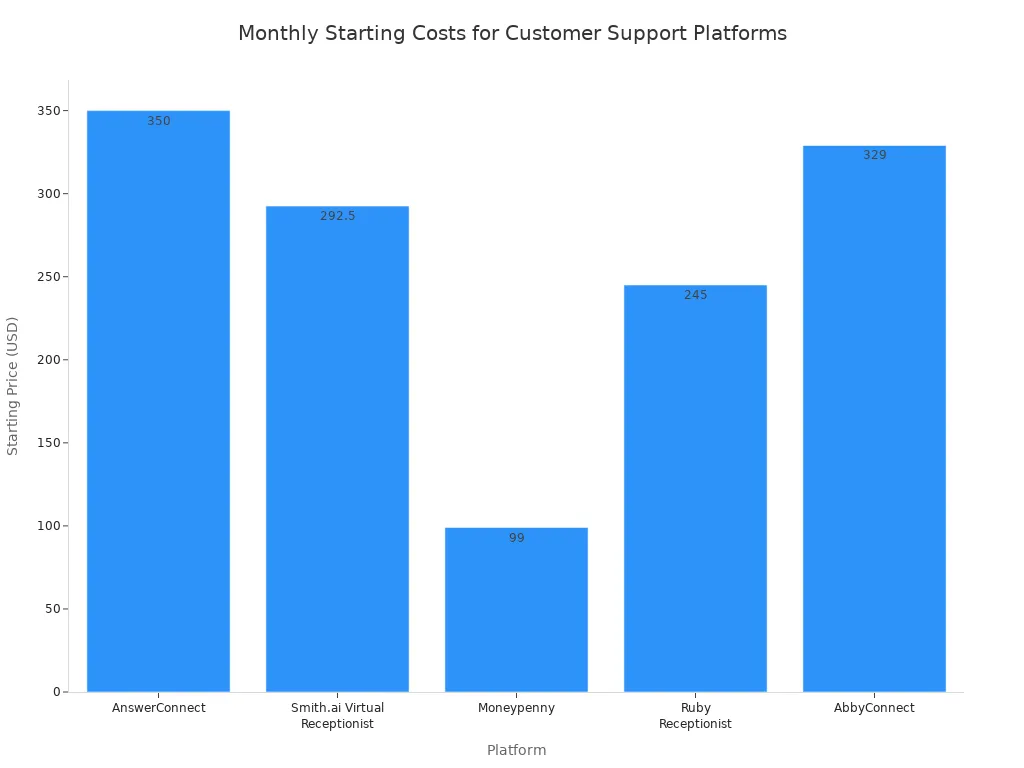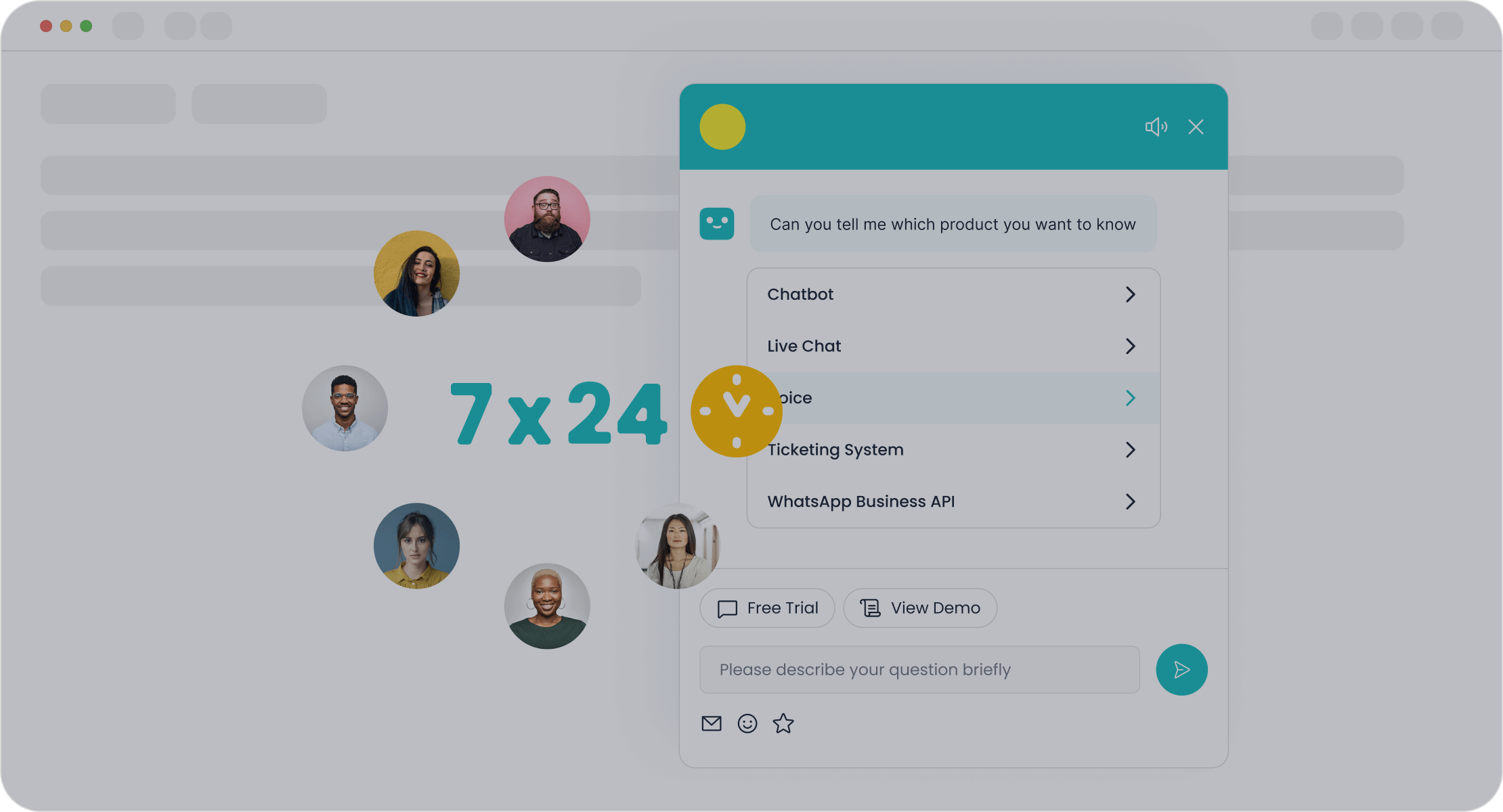AI Chatbot for Ecommerce Explained (2025)

You work hard to build your ecommerce business. Yet, you likely lose sales daily. The global cart abandonment rate is a staggering 78.77%, and it’s even higher in fashion at 84.61%. Providing 24/7 customer service to prevent this is expensive.
 This is where AI e-commerce chatbots offer a powerful advantage. An AI chatbot, like the Sobot AI solution, provides instant support beyond a basic live chat for ecommerce website. This advanced chatbot can work with tools like the Sobot call center to unify your support. Sobot helps you understand this technology and its impact.
This is where AI e-commerce chatbots offer a powerful advantage. An AI chatbot, like the Sobot AI solution, provides instant support beyond a basic live chat for ecommerce website. This advanced chatbot can work with tools like the Sobot call center to unify your support. Sobot helps you understand this technology and its impact.
What Are E-commerce Chatbots?

E-commerce chatbots are automated programs that simulate human conversation on your website or messaging apps. These tools are becoming essential for online businesses. The global chatbot market is projected to grow at a compound annual growth rate of 23.3% from 2023 to 2028, showing just how valuable they are.
Defining AI-Powered Conversations
An AI-powered conversation uses artificial intelligence (AI) to understand and respond to customer questions in a natural way. Unlike simple bots, an AI chatbot learns from every interaction. This technology drives conversational AI in e-commerce, allowing you to offer personalized and dynamic support that feels human. These advanced e-commerce chatbots can handle complex queries far beyond a basic script.
AI vs. Rule-Based Chatbots
You have two main types of chatbots to consider. Rule-based bots follow a strict script, while AI bots think more freely. The right choice depends on your needs.
| Feature | AI-Powered Chatbots | Rule-Based Chatbots |
|---|---|---|
| Intelligence | Understands user intent and learns over time. | Follows predefined rules and scripts. |
| Interaction | Handles complex, natural language questions. | Best for simple, direct questions like FAQs. |
| Personalization | Remembers context for tailored responses. | Cannot remember past parts of the conversation. |
The Role of Natural Language Processing
Natural Language Processing (NLP) is the core technology that makes an AI chatbot smart. It allows the software to read, understand, and interpret human language. This is how a chatbot can grasp what you mean, even with typos. The key components of this conversational AI include:
- Artificial Intelligence (AI): Powers the decision-making.
- Natural Language Processing (NLP): Processes human language.
- Natural Language Understanding (NLU): Identifies the user's specific goal.
Understanding Customer Intent
The main goal of an AI chatbot is to understand a customer's intent—what they want to accomplish. By using AI, e-commerce chatbots can accurately identify various intents during a shopping journey.
- Product Inquiry: Asking for details about a specific item.
- Order Status: Checking "Where is my order?"
- Return and Refund: Needing help with a damaged product.
- Discount and Promotion: Inquiring about current sales.
How AI Chatbots Boost Ecommerce Performance
An AI chatbot does more than just answer questions. It actively works to grow your business. You can use this technology to increase sales, satisfy customers, and lower your expenses. This is key to transforming ecommerce from a simple online store into an intelligent, automated revenue engine.
Boost Ecommerce Sales and Conversions
An AI chatbot acts like a helpful sales assistant on your website, available 24/7. It guides customers, answers product questions, and helps them find exactly what they need. This level of instant support makes customers more confident in their purchases. A customer who interacts with a chatbot is often three times more likely to buy something. Studies show that effective e-commerce chatbots can boost conversions by 20% or more, directly increasing your revenue.
Many top brands already use this strategy for growth:
- H&M saw a 15-25% increase in online sales after using AI agents for personalized recommendations.
- American Eagle used a chatbot to achieve a 25% click-through rate to its website, attracting new customers.
- Amazon increased its average order value by 10% with its AI-powered recommendation engine.
Reduce Cart Abandonment
Abandoned carts represent lost revenue. An AI chatbot gives you a powerful tool for automated abandoned cart recovery. Instead of letting customers leave, the chatbot can step in at the perfect moment.
How a Chatbot Recovers Carts: A chatbot can proactively remind a customer about items left in their cart. It instantly answers last-minute questions about shipping or returns that might cause hesitation. The AI can even offer a small, personalized discount to encourage the customer to complete the checkout, turning a potential lost sale into a completed order.
Deliver Instant 24/7 Customer Support
Modern customers expect fast answers. Research shows 85% of consumers expect short wait times, but only about half of them actually experience it. This gap leads to frustration and lost business. An AI chatbot eliminates waiting entirely. It provides immediate, accurate answers around the clock, even on holidays or in the middle of the night.
This instant support improves the customer experience far beyond a standard live chat for ecommerce website, which often depends on agent availability. Whether a customer asks about order status or product details, the chatbot delivers the right information without delay. This level of responsive customer service builds trust and loyalty.
Lower Operational Costs
Hiring a large customer service team is expensive. Customer service chatbots reduce this financial burden significantly. A single chatbot can handle thousands of conversations at once, answering common questions automatically. This frees up your human agents to focus on complex problems that require a personal touch.
Businesses that implement AI see major cost savings. Some organizations report an average ROI between 148-200%, with annual savings often exceeding $300,000. By automating routine tasks, a chatbot helps you scale your support without scaling your costs, directly boosting your revenue.
Gather Valuable Customer Insights
Every conversation is a chance to learn about your customers. An AI chatbot is an excellent tool for gathering data. It collects information that helps you understand what your customers want and need. This is a core function of modern conversational AI.
The chatbot logs important details from every interaction, including:
- Customer preferences and shopping habits
- Frequently asked questions
- Products customers are most interested in
- Common pain points or issues
You can use these insights to improve your products, marketing, and overall customer engagement strategy. This data-driven approach allows for better personalization, helping you create a shopping experience that keeps customers coming back.
Why Choose Sobot's AI Chatbot for Ecommerce?

Choosing the right platform is the most important step in leveraging AI. The Sobot AI Chatbot is designed specifically to drive growth for your ecommerce business. It helps you achieve remarkable results, including a 70% improvement in productivity, 50% savings on operational costs, and a 20% boost in conversions. This powerful tool transforms your customer service and boosts your revenue.
No-Code Setup for Easy Deployment
You do not need a team of developers to launch a powerful AI chatbot. Sobot features a no-code, point-and-click interface that makes setup simple and fast. You can design and deploy automated workflows without writing a single line of code. This accessibility means anyone on your team can manage the chatbot.
While custom-built solutions can take months to develop, you can get a no-code platform running in minutes. Some businesses even deploy their AI sales agent in under 5 minutes. This speed allows you to start improving your customer experience almost immediately.
| Solution Type | Time to Launch |
|---|---|
| Custom Development | 3–6 months |
| No-Code Platforms (like Sobot) | <5 minutes |
Omnichannel Support and Integration
Your customers interact with your brand across many channels. Sobot unifies these conversations into one seamless experience. The number of customers who prefer social media for support has grown dramatically. You need a chatbot that can meet them where they are. Sobot integrates with the channels your customers use most.
- Website Live Chat
- Social Media (Facebook, Instagram)
- Messaging Apps (WhatsApp, SMS)
- Email and Voice
This omnichannel approach was key for the luxury brand Michael Kors. By unifying their communication channels with Sobot, they created a consistent and efficient customer service experience. This strategy helps you build stronger customer engagement and never miss an opportunity to connect.
Proactive Messaging to Increase Leads
A great AI chatbot does not wait for customers to ask for help. Sobot's chatbot proactively engages visitors to guide them toward a purchase. This turns passive browsers into active buyers and directly increases your revenue. For example, the chatbot can send a targeted message if a customer hesitates on a product page.
Example Proactive Message: "Having trouble deciding? Those shoes have a 5-star rating! Here’s a 10% discount to help you make your decision."
This strategy is highly effective for lead generation. The AI can offer first-order discounts in exchange for an email or recover abandoned carts by offering assistance, helping you build your marketing lists while closing more sales.
Advanced Analytics and Reporting
To improve your performance, you need to measure it. Sobot provides an advanced analytics dashboard with the key metrics you need to track your chatbot's success. This data gives you clear insights into customer behavior and bot performance.
Important metrics you can track include:
- Resolution Rate: How often the chatbot solves a query on its own.
- Escalation Rate: How often a conversation is passed to a human agent.
- Interaction Volume: The total number of conversations your bot handles.
- Conversion Rate: How many interactions lead to a sale.
Luxury brand Michael Kors used these insights to achieve incredible results with Sobot. They reached a 95% customer satisfaction rate and saw an 83% reduction in average response time. This proves that the right AI tool delivers measurable and transformative outcomes.
Must-Have Features for Ecommerce Chatbots

To get the most from your investment, you need to choose e-commerce chatbots with the right capabilities. These features turn a simple tool into a powerful engine for growth, enhancing everything from customer service to sales. A great AI chatbot should offer more than just basic answers; it must integrate deeply into your operations.
Seamless Platform Integrations
Your chatbot must connect effortlessly with your existing ecommerce platform. This integration allows the AI to access real-time product data and order information. It ensures your customers receive accurate, up-to-the-minute support. Key platforms your chatbot should support include:
- Shopify
- WooCommerce
- Magento
- BigCommerce
A proper integration means your AI chatbot can pull product details and sync order statuses without any manual work from your team.
Multilingual Capabilities
Your business can reach customers all over the world. A multilingual chatbot ensures you can communicate with them in their native language. This level of personalization builds trust and makes your brand feel more accessible. It removes language barriers, creating a smoother path to purchase for a global audience.
Unify with Live Chat for Ecommerce Website
The best support strategy combines AI with a human touch. A hybrid model that unifies your chatbot with a live chat for ecommerce website is essential. The AI can handle up to 80% of routine questions on its own. For complex issues, it seamlessly transfers the conversation to a human agent. This approach prevents customer frustration and ensures every issue finds a resolution. This is a smarter way to manage your live chat for ecommerce website.
Automated Order Tracking
Customers frequently ask, "Where is my order?" These questions can make up 30% to 50% of all support tickets. An AI chatbot with automated order tracking answers this question instantly, 24/7.
This feature dramatically reduces the workload on your support team. It provides a better customer experience and frees up your agents to handle more complex problems. It is a simple yet powerful function for any live chat for ecommerce website.
AI-Powered Product Recommendations
An AI chatbot can act as a personal shopper for your visitors. It uses data to offer personalized product suggestions that match a customer's interests. This creates a more engaging and personalized shopping experience. This feature is proven to increase sales. AI-powered recommendations can boost your average order value by 10-30%. This turns your live chat for ecommerce website from a support tool into a revenue-generating asset. These e-commerce chatbots drive sales through smart personalization.
Implementing Your AI Chatbot in 4 Steps
Putting an AI chatbot to work for your business is a straightforward process. You can launch a powerful tool by following these four simple steps. This approach helps you maximize your return on investment and improve your customer experience from day one.
Step 1: Define Goals and Use Cases
First, you need to decide what you want your chatbot to accomplish. Clear goals will guide your entire strategy. Most e-commerce businesses use an AI chatbot to achieve specific outcomes.
Common Goals for an Ecommerce Chatbot:
- Reduce cart abandonment by proactively offering help.
- Automate customer service to handle common questions.
- Provide instant order tracking and delivery updates.
- Offer multilingual support to serve a global audience.
- Increase sales through AI-powered product recommendations.
Step 2: Choose the Right Platform
Next, you must select the right AI platform. Look for a solution that is easy to set up and integrates with your existing tools like Shopify or WooCommerce. Your platform should have high accuracy in understanding customer questions and offer a seamless handover to human agents when needed. Prioritize platforms with transparent pricing and powerful analytics to track your success.
Step 3: Design and Train Your Bot
Now it is time to build your chatbot. Start by giving it a personality that matches your brand’s voice. You can train your AI by uploading your product catalogs, FAQs, and policy documents. This creates a knowledge base for the bot to pull answers from. The design should be conversational and user-friendly, making it easy for customers to get the help they need.
Step 4: Launch, Monitor, and Optimize
After you launch your chatbot, your work is not done. You need to monitor its performance to see how well it is working. Track key metrics to measure its success.
- Resolution Rate: How many issues does the AI solve on its own?
- Customer Satisfaction (CSAT): Are customers happy with the support they receive?
- Conversion Rate: How many interactions lead to a sale?
Use these insights to optimize your AI and improve its responses over time.
You now see how AI is transforming ecommerce. An AI chatbot drives sales, improves customer experience, and lowers costs. Implementing a powerful chatbot is an accessible and strategic move for your business. This technology gives you a major competitive advantage. Ready to see what AI can do for you?
Embark on Your Contact Journey. Explore the Sobot AI Chatbot solution at sobot.io today!
FAQ
How much does an AI chatbot cost?
The cost of an AI chatbot varies. Simple rule-based bots can be affordable. Advanced AI platforms like Sobot offer powerful features with a high return on investment. You can find a solution that fits your budget and business needs.
Do I need coding skills to set up a chatbot?
No, you do not need to be a developer. Modern platforms like Sobot offer no-code solutions. You can use a simple point-and-click interface to design and launch your chatbot quickly, often in just a few minutes.
Can a chatbot speak multiple languages?
Yes, many e-commerce chatbots have multilingual capabilities. This feature allows you to support customers from around the world in their native language. It helps you build trust and expand your global reach without hiring multilingual agents.
What happens if the chatbot cannot answer a question?
A good AI chatbot knows its limits. If it cannot solve a problem, it will seamlessly transfer the conversation to a human agent. This hybrid approach ensures your customers always get the right help without frustration.
See Also
Elevating E-commerce Customer Happiness Through Smart Chatbot Solutions
The Best Live Chat Platforms for E-commerce Businesses This Year
Driving E-commerce Revenue Growth with Effective Live Chat Software
Simple Steps to Deploy Effective Chatbot Examples on Your Website
Crafting a Powerful Chatbot for Optimal Website Performance and Success
